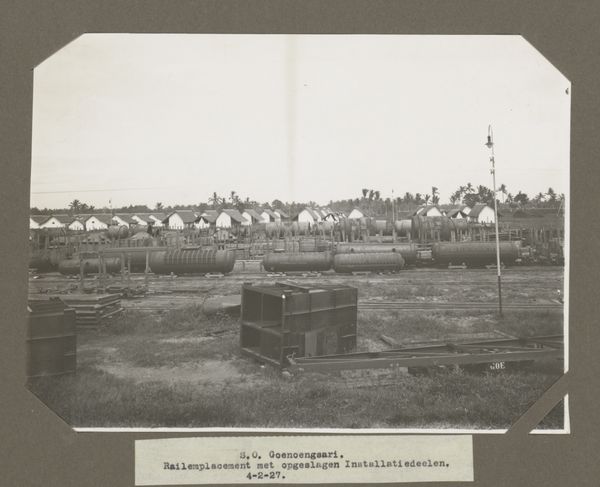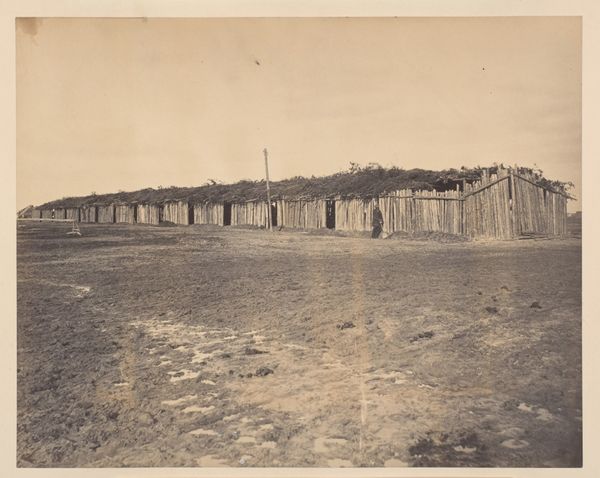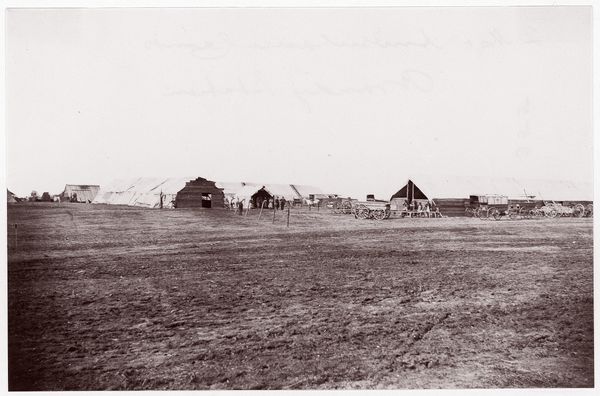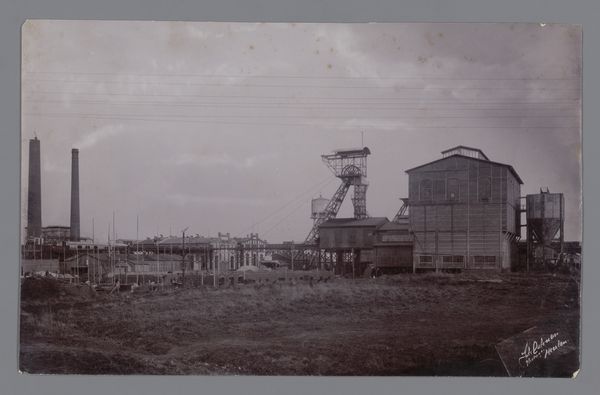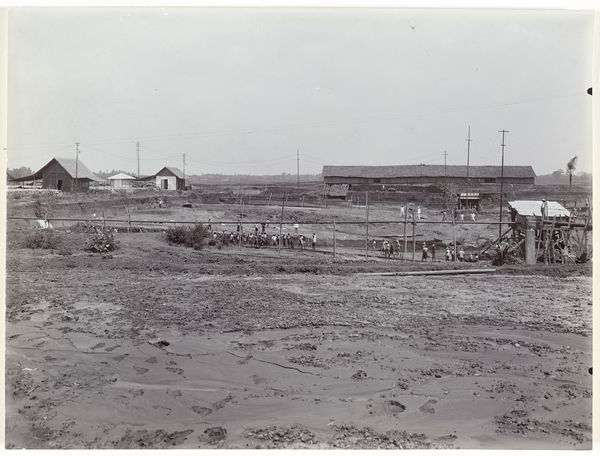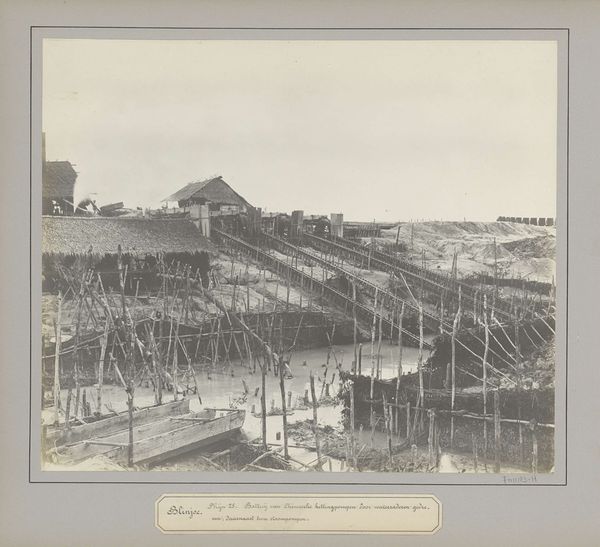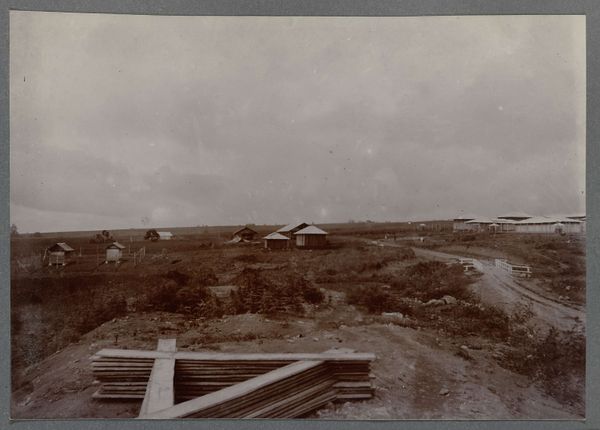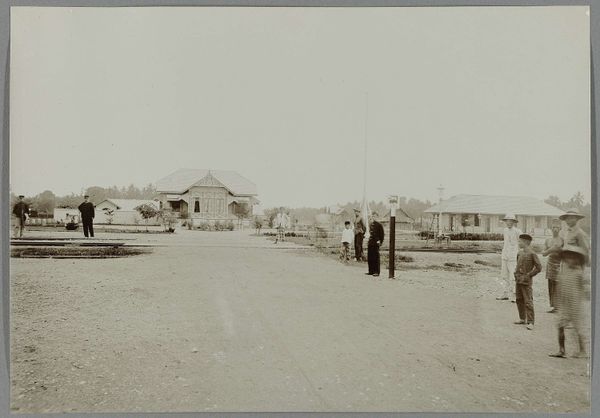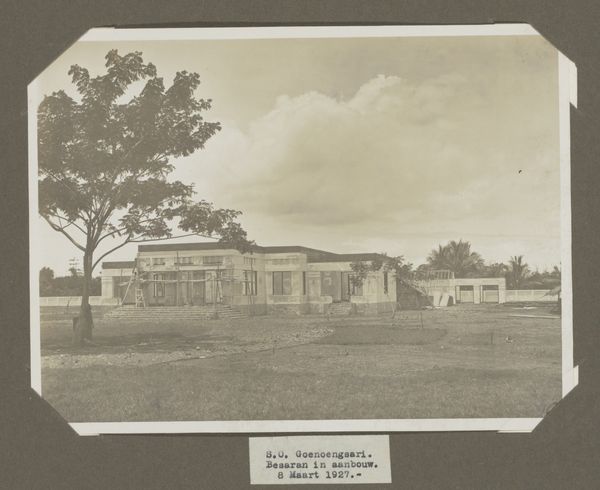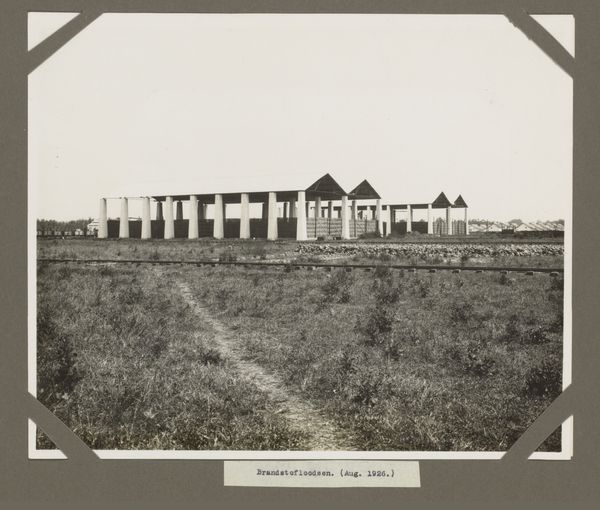
photography, gelatin-silver-print
#
landscape
#
photography
#
constructionism
#
gelatin-silver-print
Dimensions: height 175 mm, width 235 mm
Copyright: Rijks Museum: Open Domain
Curator: The Rijksmuseum holds a gelatin silver print from 1927 entitled “S.O. Goenoengsari. Ampascarrier. Juli 1927." Editor: The tones create a bleak atmosphere, almost unsettling, don't you think? And the perspective feels distant, withdrawn. It's dominated by these very industrial, structural elements, with limited scale context. Curator: Absolutely, there's a definite intentionality here. If we unpack the historical context, "Ampascarrier" references a carrier of bagasse—sugarcane waste—at the Goenoengsari sugar factory, likely in Java, then part of the Dutch East Indies. So immediately, questions of colonial economics and labor arise. Editor: Interesting... but the composition itself demands consideration. Note the repetition of vertical and horizontal lines and the geometric arrangements. Constructionism's emphasis on functionality and industrial aesthetics comes through so strongly. It is a design schematic. Curator: Precisely. These structural features aren't neutral; they visually represent the exploitation of resources and people that fueled colonial industry. The perspective minimizes any natural landscape. This underscores the domination of industry. What the architecture means... Editor: Agreed, but that exploitation is encoded in its architectural arrangement. Look how your gaze keeps going over those elements to determine structure. Curator: Indeed. And I wonder what a Javanese viewer at the time would feel, looking at an image celebrating their exploitation in the service of distant Dutch pockets. I wonder how a contemporary viewer would interpret this. Editor: Well, regardless of its exploitation then, that semiotic framing does help me appreciate this silver print more fully today. There's more depth there than I originally registered. Curator: It becomes more poignant as an artifact of that colonial regime. Looking at it in the current age is more powerful when seen within this historical and political context.
Comments
No comments
Be the first to comment and join the conversation on the ultimate creative platform.
